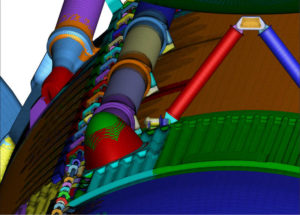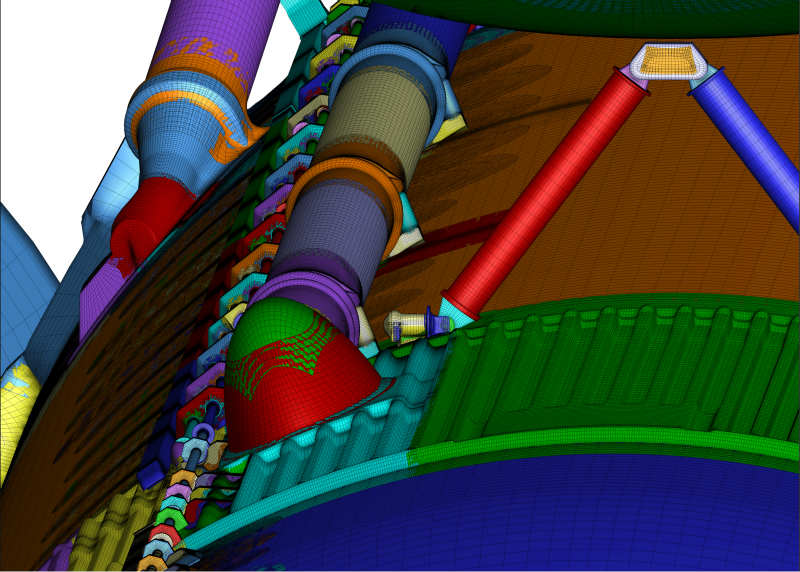
This image shows overset surface grids processed by Pegasus 5 that model the space shuttle’s external tank, including its bi-pod attach hardware and liquid oxygen feedline. Stuart Rogers, NASA/Ames
Over at NASA, Michelle Moyer writes that the 2016 NASA Software of the Year Award has gone to Pegasus 5, a revolutionary CFD tool.
Developed in-house by a team led by aerospace engineer Stuart Rogers from NASA Ames, Pegasus 5 has been used for aerodynamic modeling and simulation by nearly every NASA program over the past 15 years, including the space shuttle, the next-generation Orion spacecraft and Space Launch System, and commercial crew programs.
My co-developers and I are deeply honored to receive this award from NASA,” said Rogers. “And we thank the many people who have used the software and provided feedback and suggestions, helping make Pegasus 5 such a valuable tool.”
The software’s ease of use and advanced features have enabled researchers and engineers to overcome challenges in the so-called overset grid method of simulating complicated systems such as aerospace vehicles. The overset grid approach involves breaking down complex computational domains into smaller regions that can be represented by relatively simple grids. Before Pegasus 5 became available, integrating these grids required many weeks of work by an expert CFD researcher—an onerous task prone to user error, especially as simulations and vehicle configurations increased in complexity. Pegasus 5 performs this essential function and provides additional usability features that greatly reduce the amount of work and level of experience required by the user. By providing seamless, automated integration of overset CFD grids, Pegasus 5 allows NASA programs to rely on overset CFD analysis as a primary data source for building aerodynamic databases.
In addition to widespread use within NASA, the software has also been released to over 100 professors and students at major universities, including Stanford University, Massachusetts Institute of Technology, John Hopkins University, the U.S. Air Force Academy, and many others. Commercial users include The Boeing Company, SpaceX, Sierra Nevada Corporation, and Lockheed Martin Space Systems.
The Pegasus 5 development team also includes Norman E. Suhs, aerospace engineer, Army Aviation Research Development & Engineering Center; and William E. Dietz, principal engineer emeritus, Kratos Defense and Security Solutions.
Read the Full Story.




